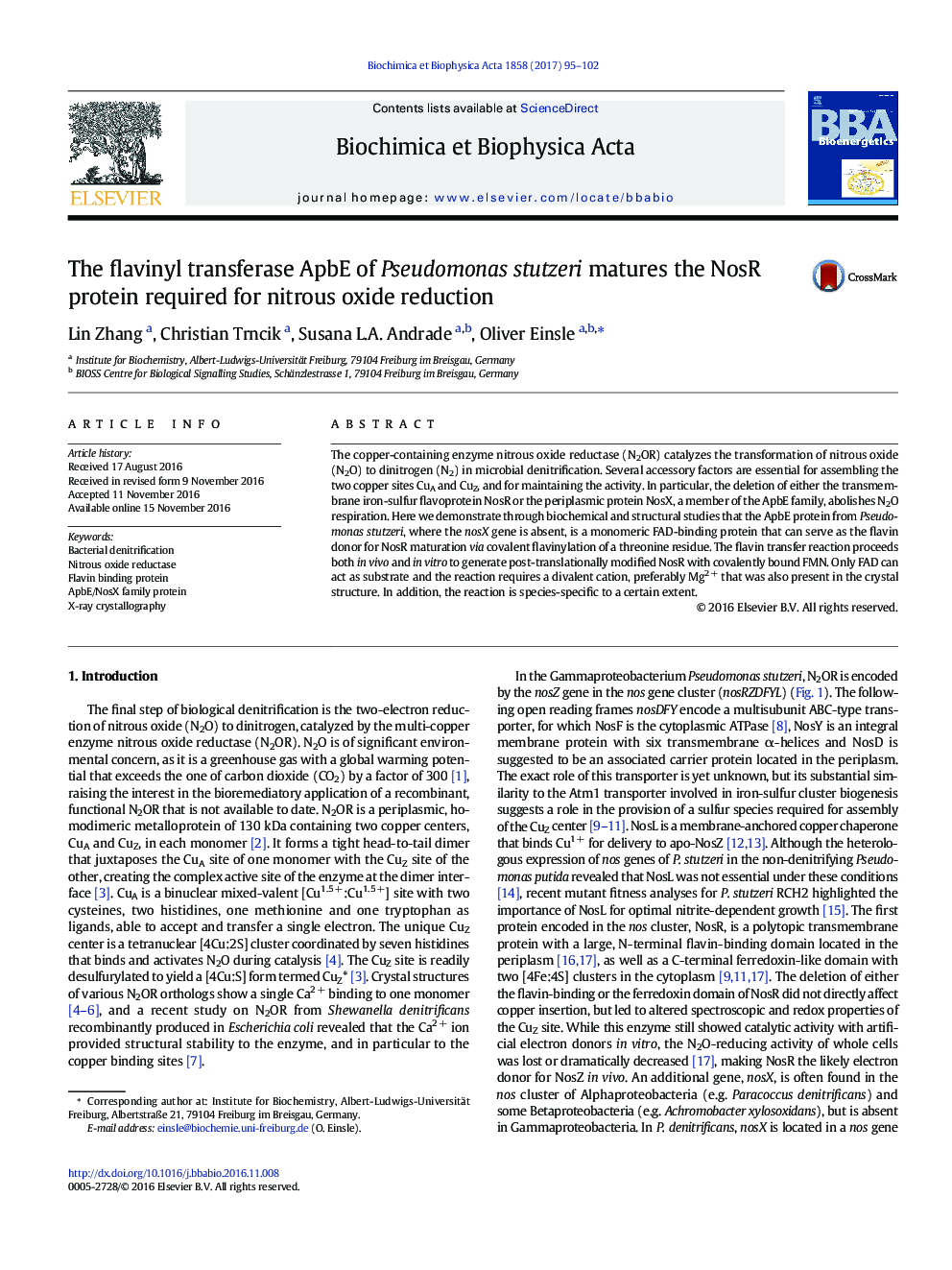| Article ID | Journal | Published Year | Pages | File Type |
|---|---|---|---|---|
| 5507177 | Biochimica et Biophysica Acta (BBA) - Bioenergetics | 2017 | 8 Pages |
Abstract
The copper-containing enzyme nitrous oxide reductase (N2OR) catalyzes the transformation of nitrous oxide (N2O) to dinitrogen (N2) in microbial denitrification. Several accessory factors are essential for assembling the two copper sites CuA and CuZ, and for maintaining the activity. In particular, the deletion of either the transmembrane iron-sulfur flavoprotein NosR or the periplasmic protein NosX, a member of the ApbE family, abolishes N2O respiration. Here we demonstrate through biochemical and structural studies that the ApbE protein from Pseudomonas stutzeri, where the nosX gene is absent, is a monomeric FAD-binding protein that can serve as the flavin donor for NosR maturation via covalent flavinylation of a threonine residue. The flavin transfer reaction proceeds both in vivo and in vitro to generate post-translationally modified NosR with covalently bound FMN. Only FAD can act as substrate and the reaction requires a divalent cation, preferably Mg2Â + that was also present in the crystal structure. In addition, the reaction is species-specific to a certain extent.
Related Topics
Life Sciences
Agricultural and Biological Sciences
Plant Science
Authors
Lin Zhang, Christian Trncik, Susana L.A. Andrade, Oliver Einsle,
